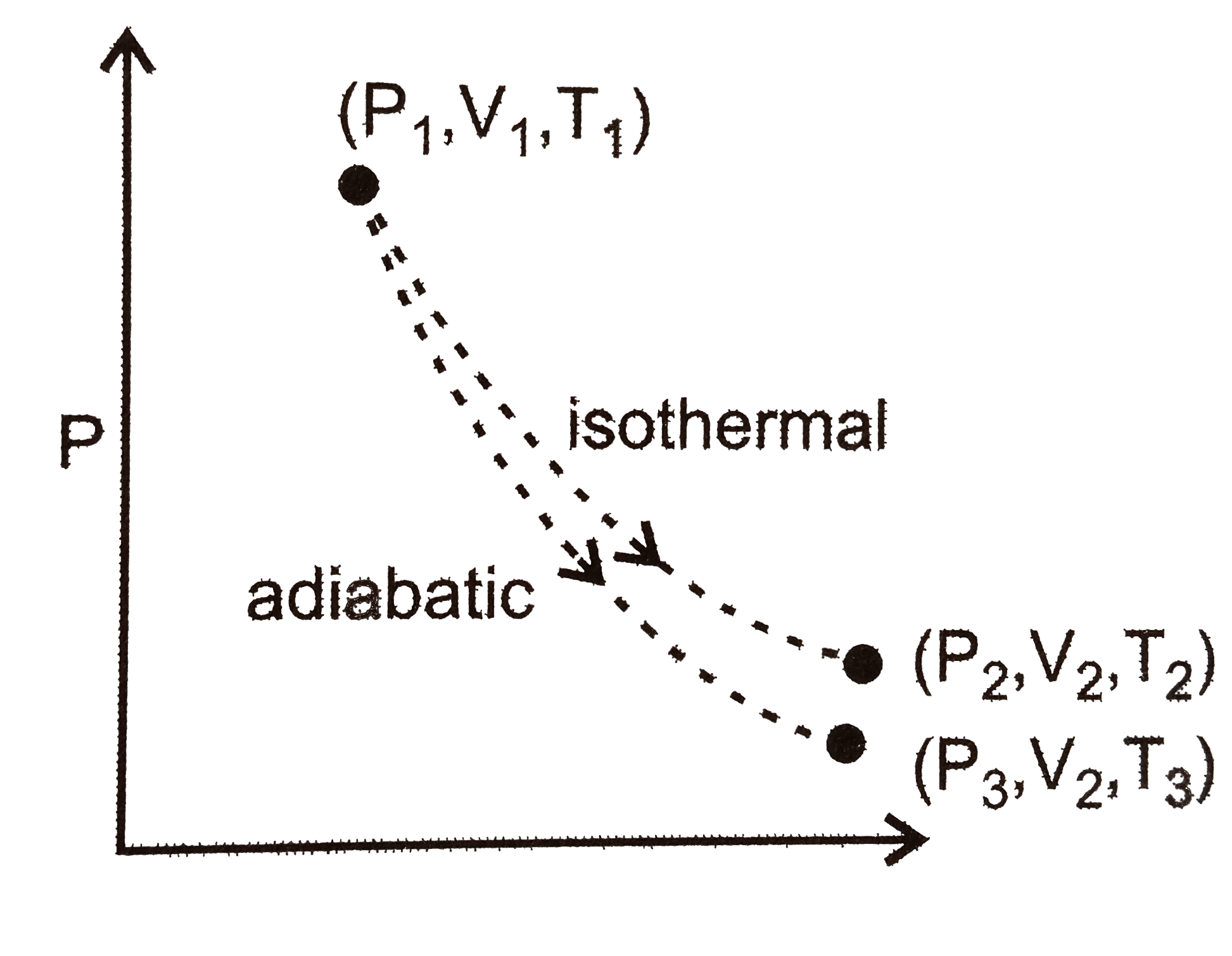An ideal gas undergoes adiabatic expansion against constant external pressure. Which of the following is incorrect.
Temperature of the system decreases.
The relation PVγ= constant will be valid (where P and V are gas variables)
ΔE+PextΔV=0
Enthalpy of the gas remains unchanged.
The correct Answer is:B, D
In adiabatic expansion, q=0. So ΔE−W=−PextΔV.
Irreversible adiabatic So PVγ= constant not valid.
since q=0, so gas does work by utilizing its internal energy.
So, T decreases and also enthalpy (H) decreases.
Topper's Solved these Questions
- BOOK - RESONANCE ENGLISHCHAPTER - THERMODYNAMICSEXERCISE - Exercise-2 part -IV : Comprehension11videos
THERMODYNAMICS
- BOOK - RESONANCE ENGLISHCHAPTER - THERMODYNAMICSEXERCISE - Exercise-3 Part-1: JEE (ADVANCED)11videos
THERMODYNAMICS
- BOOK - RESONANCE ENGLISHCHAPTER - THERMODYNAMICSEXERCISE - Exercise-2 II: Single and double value integer type16videos
THERMODYNAMICS
- BOOK - RESONANCE ENGLISHCHAPTER - TEST SERIESEXERCISE - CHEMISTRY50videos
TEST SERIES
Similar Questions
Adiabatic expansion of a gas causes
View SolutionAn ideal gas undergoes isothermal expansion at constant pressure . During the process.
View SolutionAn ideal gas undergoing expansion in vaccum shows
View SolutionWhen an ideal gas undergoes unrestricted expansion
View SolutionA sample of 4 mole He is originally confined in 20L at 270K and then undergoes adiabatic expansion against a constant pressure of untill the volume has increased by factor of 3. Calculate ΔT during process:
View SolutionAn ideal gas is expended adiabatically then
View SolutionWhen 1mol of a monoatomic ideal gas at TK undergoes adiabatic change under a constant external pressure of 1atm, changes volume from 1L→2L. The final temperature (in K) would be
View SolutionWhen 1mol of a monoatomic ideal gas at TK undergoes adiabatic change under a constant external pressure of 1atm, changes volume from 1L→2L. The final temperature (in K) would be
View SolutionWhen a gas undergoes adiabatic expansion, it gets cooles. This is because
View SolutionThe reversible expansion of an ideal gas under adiabatic and isothermal conditions is shown in the figure. Which of the following statement(s) is (are) correct?
 View Solution
View Solution

